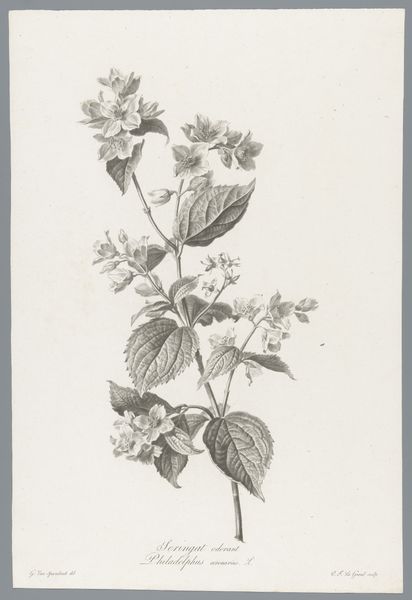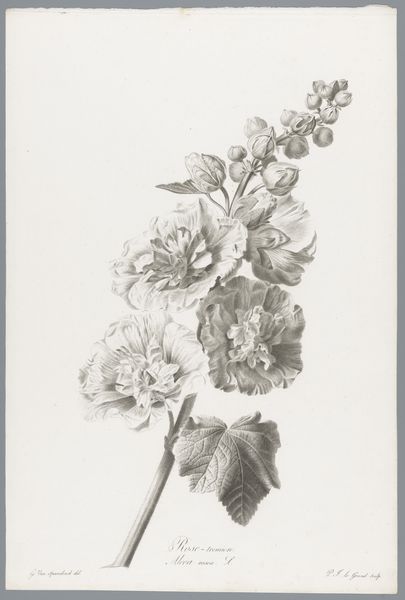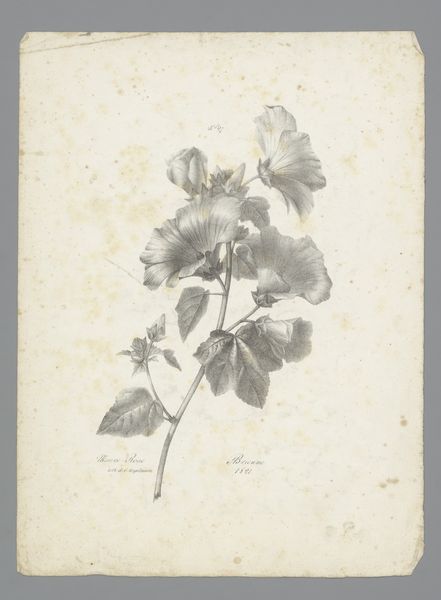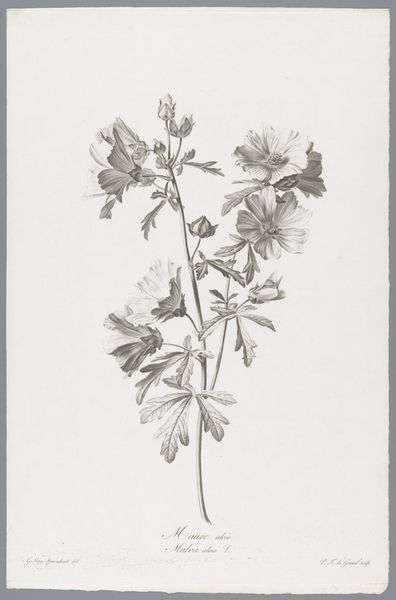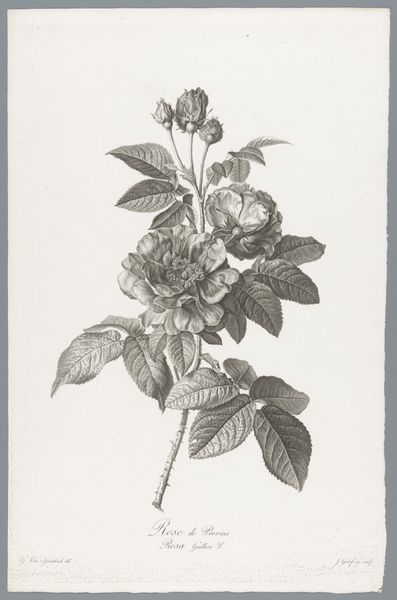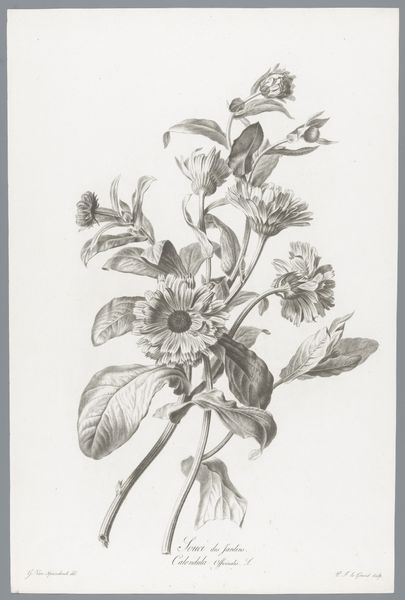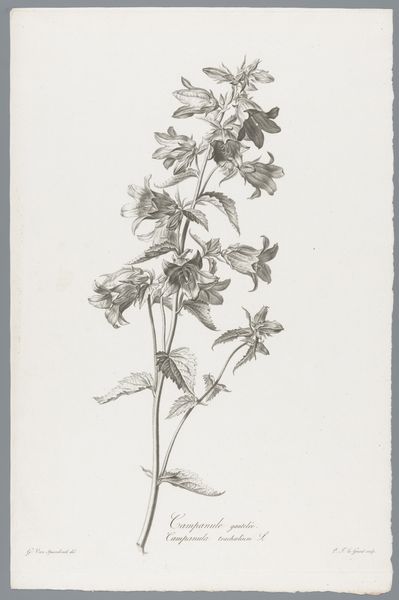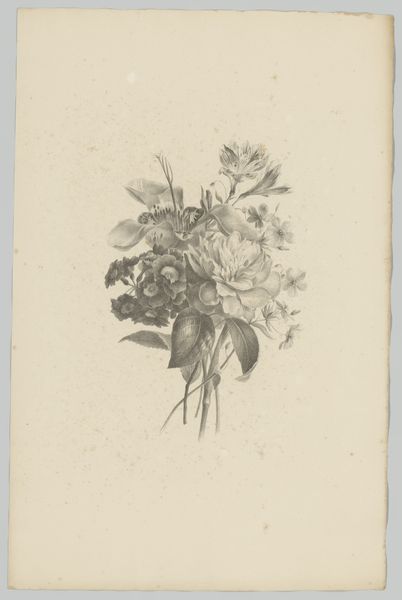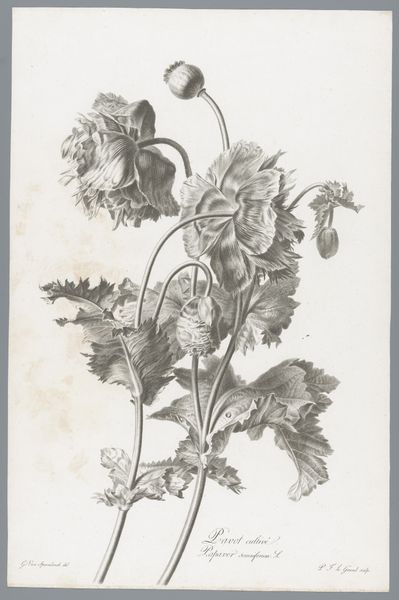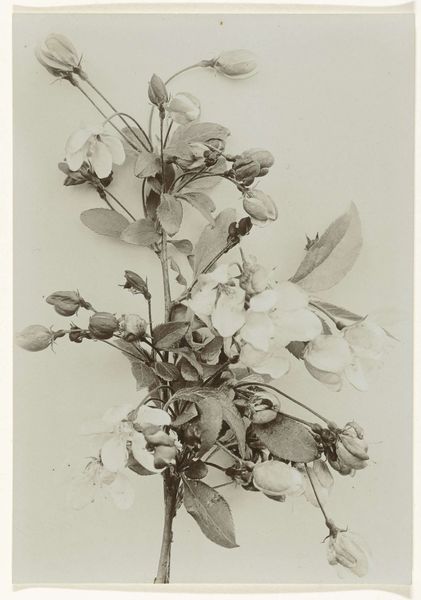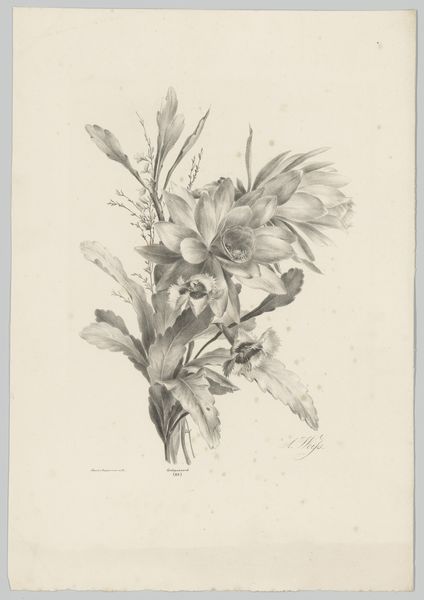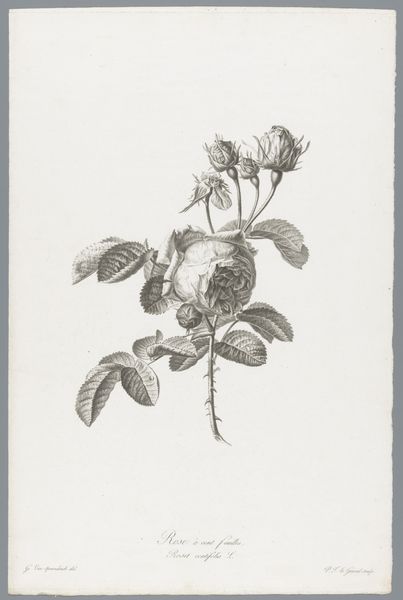
drawing, tempera, print, paper, engraving
#
drawing
#
tempera
#
neoclassicism
# print
#
paper
#
line
#
engraving
#
botanical art
#
realism
Dimensions: height 495 mm, width 341 mm
Copyright: Rijks Museum: Open Domain
Editor: So this is "Grootbloemige lavatera" by Louis Charles Ruotte, made between 1799 and 1801. It’s a tempera, print, and engraving on paper, currently at the Rijksmuseum. I am immediately struck by its meticulous detail, even in this monochromatic palette. What do you see in this piece beyond a botanical study? Curator: I see a visual representation deeply intertwined with the Enlightenment’s scientific and colonial pursuits. Botanical art of this era wasn't just about pretty pictures; it was a tool for cataloging and controlling the natural world. Ruotte's precise rendering speaks to that desire for knowledge and classification that fueled both scientific advancement and, problematically, colonial expansion. Consider how the Linnaean system, which categorized plants, also intersected with racial classification theories of the time. What does the artist's choice to use line and engraving suggest to you about the perception of nature at that time? Editor: That’s interesting, I hadn’t thought about the link between scientific classification and colonialism in art. The precise lines, I guess, speak to a desire to accurately document the natural world. Almost as if it were a specimen. Curator: Precisely! It transforms the plant into an object of study, separate from its ecosystem. We must ask: How did the pursuit of scientific accuracy sometimes reinforce existing power structures and narratives, defining some knowledge as ‘universal’ while marginalizing others? Think about whose gaze is privileged here, and what it might exclude. This piece seems 'objective,' but we need to question whose view that objectivity serves. How does an awareness of this history alter your perspective of Ruotte's work? Editor: It makes me more critical. What once seemed like a neutral, pretty picture now seems loaded with a complicated history. I never considered how botanical illustration could have such a deep cultural meaning. Curator: Exactly! By unpacking the context, we move past merely aesthetic appreciation towards a richer, more nuanced understanding of art's role in shaping our world. There are lessons in Lavatera still.
Comments
No comments
Be the first to comment and join the conversation on the ultimate creative platform.
